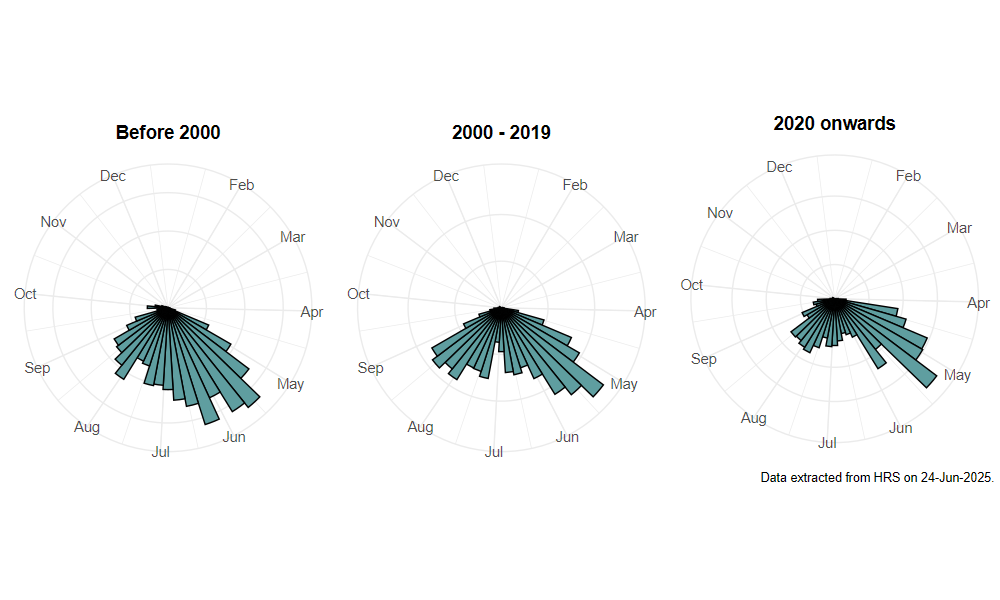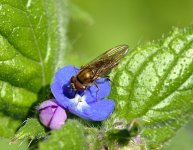Platycheirus manicatus (Meigen, 1822)
Identification
Identification difficulty = 2. ![]()
![]() according to Ball & Morris, 20241
according to Ball & Morris, 20241
Biology
The larva feeds on aphids on low growing plants and bushes. According to Stubbs & Falk (1983)2 it is a grassland species, preferring drier grasslands on neutral to calcareous soils, but Speight (2017)3 describes it as a species of wet or humid open ground and Rotheray (1993)4 reports that gravid females seem to prefer moist shady situations. Our experience is that it is frequently swept from long grass in most habitats, but is especially abundant in coastal grasslands. Adults are often found visiting a wide range on flowers, especially white umbels.
Flight period
The following plots show the number of unique records per week excluding those reported to be of immature stages.

Distribution
Widespread and common, including many of the Scottish islands.

Trends
The following plots show the Frescalo TFactor vs year and a map of the rescaled frequency (all records) for the species.
-
Ball, S., & Morris, R. (2024). Hoverflies of Britain and Ireland. WILDGuides (3rd ed.). Oxford: Princeton University Press. ↩
-
Stubbs, A., & Falk, S. (1983). British Hoverflies: An Illustrated Identification Guide (1st ed.). Reading: BENHS. ↩
-
Speight, M. (2017). Species accounts of European Syrphidae ( No. 97). yrph the Net, the database of European Syrphidae (Diptera) (p. 294). Dublin: Syrph the Net publications. Retrieved from https://pollinators.ie/wordpress/wp-content/uploads/2018/05/StN-2017-Species-Accounts.pdf ↩
-
Rotheray, G. (1993). Colour guide to hoverfly larvae (Diptera, Syrphidae) in Britain and Europe. Dipterists Digest (first series), 9, 1–155. ↩
